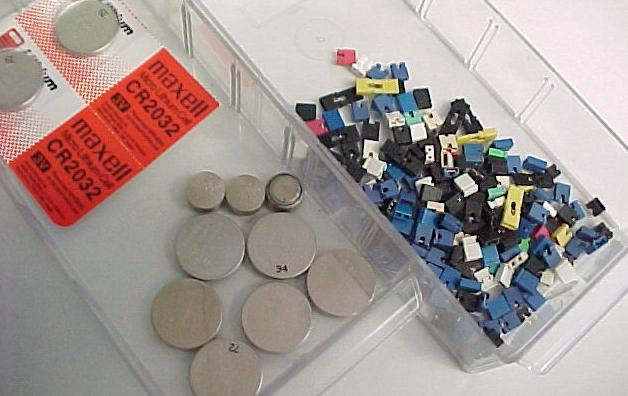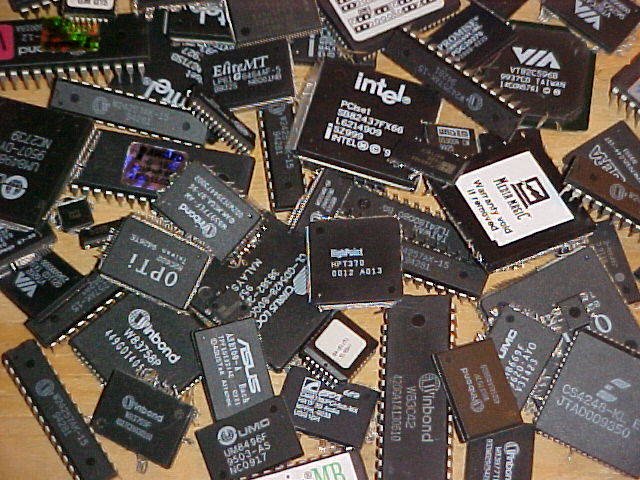This motherboard is one of many I've had to put down. Despite the emotional attachment I had to it I see no reason to treat it any differently than any other board that has laid down it's life in the line of duty. Once everything has been tested twice and removed, CPU, cards, and memory I get down to business. To your average person all that's left is useless PCB, but to your average uber geek there are still useful components here.
The first of these useful components are jumpers. Unless you're dead motherboard is brand spanking new odds are it will have a jumper or two...surprisingly even the jumperless ones usually have some. Spare jumpers are always good to have around. They can be used on just about anything, and I've lost plenty of jumpers behind the workbench. If you're really picky it's nice to have a variety of jumpers around in case you're the kind of person that likes to have all your jumpers match.
 Second on the list of what to take before throwing the motherboard out is the CMOS battery. It's amazing that almost every motherboard ever made has a CR2032 retaining the CMOS settings of your BIOS. Granted it's used, but odds are the battery had been replaced during the life span of the mother board and will likely have much life left in it. CR2032's have an average life span of 5 years. Depending on how the computer was used they can last quite a while. I like to have a little drawer of used CR2032's...it's ironically next to my jumper drawer.
Second on the list of what to take before throwing the motherboard out is the CMOS battery. It's amazing that almost every motherboard ever made has a CR2032 retaining the CMOS settings of your BIOS. Granted it's used, but odds are the battery had been replaced during the life span of the mother board and will likely have much life left in it. CR2032's have an average life span of 5 years. Depending on how the computer was used they can last quite a while. I like to have a little drawer of used CR2032's...it's ironically next to my jumper drawer.Newer motherboards have heatsinks and sometimes even fans on their chipsets. These are always good to remove. Heatsinks can be reused on just about anything that generates heat, and who doesn't like to have extra fans around? You can squeeze a 40mm fan in some awkward spots and alleviate hard to fix hot spots in weird case mods. Some motherboards have special parts that are removable. In this case we can remove the plastic retention arms that hold the slot processor in place. The newer Pentium 4 and AMD64 motherboards have removable plastic or metal parts that the heat sink mounts too. These kinds of parts are always useful because you never know when you might get a working motherboard missing some of the parts. Often times they can also be rigged for functions that were never intended.
Finally there is only one thing left to remove. Can you guess what it is? I'll bet not because removing these may sometime require a Dremel or maybe just a flathead screw driver. Never the less you're looking at tools the pull these bad boys off because you got to be some kind of man to pull a Quad Flat Pack off a board with bare hands. Personally I prefer a nice flat head screw driver for everything but the Ball Grid Array style chips (usually north and south bridge chipsets). If I want those I use my Dremel and cut them out taking a square chunk of the PCB with it. I've tried to remove them with a flat head, but they usually break in the process. The next question here is why? Why do you keep those James? To be honest I don't have a good reason yet, but some day I know I'll be able to use all those chips for something extremely geeky. When it happens you better believe I'll post it here.

2 comments:
Little do you know.. I like it when those boards die because I take all those little chipsets off with glorious glee....
Oh yeah... Honey? What do I get for removing those north and south bridge chipsets with just two flat tip screw drivers? Hm?
I'm -that- good.
Post a Comment